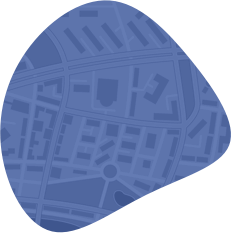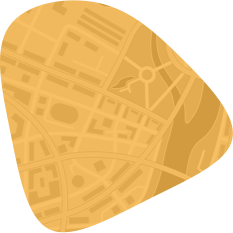
Experienced doctors explain different pain management treatments
More than 120,000 people each year on average in New York sustain a serious, work-related injury or illness, according to annual data compiled by the U.S. Bureau of Labor Statistics (BLS) for New York. And many of these work-related injuries can be very painful.
If you get hurt at work and you're in a lot of pain, you need to ensure you get the medical care you need right away. Otherwise, your work-related injury and pain might get worse and not go away.
Our board-certified, fellowship-trained doctors at Island Musculoskeletal Care (IMC Bone Doc) know how to handle painful workplace injuries. That's because our physicians have years of experience diagnosing, treating, and helping injured workers in severe pain.
What causes painful work injuries?
Pain caused by work-related injuries can involve a wide range of injuries and accidents. In general, work-related injuries fall into one of two categories:
- One-time incidents, such as a slip and fall accident or being struck by an object.
- Overuse injuries that occur over a long period of time, resulting in chronic pain.
For example, a construction worker might trip and fall due to an unmarked hazard, resulting in a painful knee injury that requires arthroscopic knee surgery or another type of surgical procedure.
Other times, someone might have chronic back pain, neck pain, or wrist pain due to working in the same position for several hours a day every day. Whatever the source of the pain, injured workers deserve the best possible medical care and pain management procedures.
Medical treatments for pain caused by work injuries
Depending on what type of injury you sustained at work, different types of medical treatments exist that are designed to improve your recovery and reduce how much pain you're in after your work-related injury. Common pain management treatments include:
- Cortisone – A type of steroid hormone, cortisone is also sometimes called corticosteroid or hydrocortisone. In many cases, cortisone injections are administered by a doctor to reduce pain, swelling, and inflammation in the knee, ankle, elbow, or other joints in the body. Corticosteroid shots can have side effects. This is why patients should consult with a doctor with extensive experience administering corticosteroid injections.
- Guided injections – Guided injections often refer to several different types of injections often used to treat and relieve chronic pain. Whether it's an image guided injection or an ultrasound guided injection, such pain injections are extremely precise and carefully target the source of pain.
- Epidural – Another type of pain relief injection, epidurals are injections directly into the back to relieve pain in the spine or other parts of the body. Epidurals are also often used during or sometimes after certain types of surgical procedures, which are commonly painful. A much more complex medical procedure than many other pain injections, epidurals are typically administered by an anesthesiologist.
- Pain medications – in some situations, doctors will prescribe pain relief medications. However, long-term use of certain pain relief medications can present certain risks and side effects. That's why people in pain need to talk with a doctor with extensive experience with the latest pain management techniques.
- Physical therapy – A standard medical treatment, physical therapy helps improve an injured worker's physical strength and overall health—and reduce pain. Depending on the severity of someone's injury or illness, physical therapy may involve months or longer of regular physical therapy sessions, often with a licensed physical therapist.
- Massage therapy – Licensed massage therapists can massage painful and sore muscles, providing relief from chronic pain.
How do doctors diagnose painful injuries?
There are many different ways doctors can diagnose and treat painful injuries. Such diagnostic tests can include:
- Physical examination by a doctor, especially of the part of the body in pain.
- Ultrasound, which uses sound waves to produce images of the inside of the body.
- X-rays, especially if the doctor suspects a bone fracture is causing the pain.
- Computerized tomography (CT) scans, which are similar to X-rays but produce several more detailed cross images.
- Magnetic resonance imaging (MRI) scan, which creates a 3D image of whichever part of the body is being examined.
Surgical procedures to relieve pain
Depending on the severity of the injury and how painful it is, surgery might be an option injured workers might want to explore with their doctor. Common surgical procedures to relieve pain caused by serious injuries often involve the knee and shoulder.
Common knee-related surgical procedures
- Arthroscopic knee surgery – Several small incisions are made into the knee to repair knee damage, including torn ligaments, loose bone fragments, and torn meniscus.
- Knee replacement surgery – All or part of the knee is completely replaced, often with an artificial knee or another type of medical device.
- Meniscal knee surgery – The surgeon repairs or replaces the torn meniscus, a piece of cartilage located between the thighbone (menisci) and shinbone (tibia).
Common shoulder-related surgical procedures
- Partial shoulder replacement surgery – Also known as shoulder hemiarthroplasty, this surgical procedure involves replacing part of the shoulder with artificial components.
- Shoulder arthroscopy surgery – Minimally-invasive shoulder surgery in which several small incisions are placed in the shoulder, and recovery time is often shorter.
- Minimally invasive shoulder joint replacement surgery – Small incisions and a multi-step process often make this form of shoulder surgery less painful.
Who pays for my medical care?
Employers in New York are required to have workers' compensation insurance. Therefore, workers' compensation should pay for all your medical care if you sustain an injury at work. However, getting such care and treatment can sometimes be very difficult.
That's why it's important to have a doctor who understands how New York's workers' compensation system works. Otherwise, you could find yourself in a sea of red tape or perhaps even have your medical care treatments denied by your employer's workers' compensation insurance provider.
At IMC Bone Doc, we can help you move your claim forward so that you can focus on healing. While you concentrate on getting better, we can fill out the paperwork, supply the supporting documents, and assist in advancing your claim.
Make sure you have an experienced doctor dealing with your painful injury
Our board-certified, fellowship-trained doctors at Island Musculoskeletal Care (IMC Bone Doc) know how New York's workers' compensation system works and can provide you with exceptional medical care.
Learn more about how we can help you. Schedule an appointment with IMC Bone Doc at one of our offices serving Brooklyn, the Bronx, Queens, and Nassau and Suffolk Counties. We frequently offer same-day appointments.






















